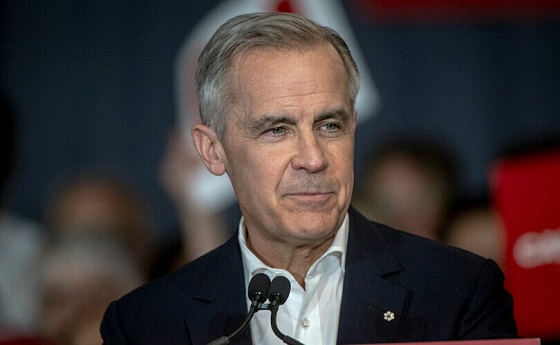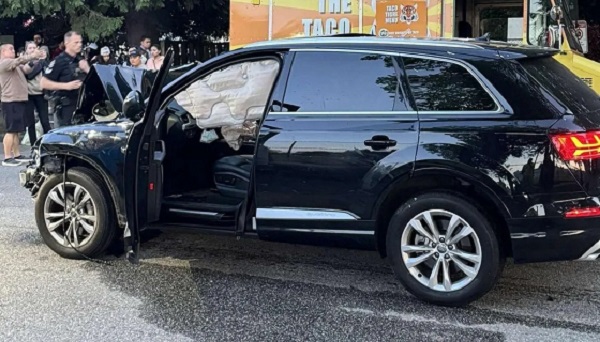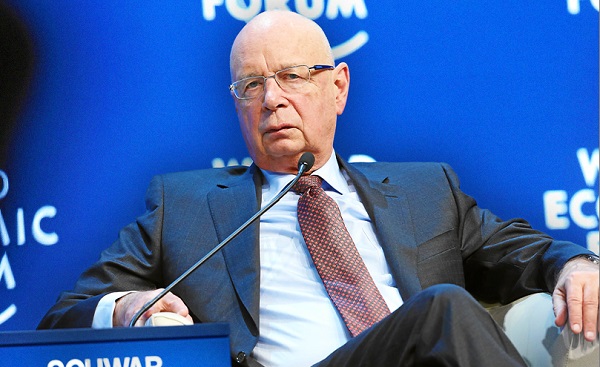Alberta
Encouraging news: Update on E. coli outbreak in Calgary

The Emergency Department at Calgary’s Peter Lougheed Hospital at the height of the E. coli outbreak, Sept 7, 2023
As hospital admissions and daily numbers of new E. coli cases continue to decline, health officials are seeing signs that the initial outbreak that affected several Calgary daycares has peaked.
The number of secondary transmissions connected to this outbreak remains low, indicating there is limited transmission of the E. coli bacteria beyond the initial outbreak.
The kitchen connected with the original outbreak remains closed indefinitely. In addition, precautionary measures at specific daycare facilities remain in place. Parents and operators have been made aware of these measures directly and through communication with Alberta Health Services.
“I am relieved every time I hear of a child who is well enough to leave hospital. My heart goes out to each family member who has been impacted, and I want them to know that we will get to the bottom of this. Thank you as well to our front-line staff for supporting these children and their families on the road to recovery.”
“Families have had their lives turned upside down by this outbreak. I’m relieved many of them are seeing their children recover and start to get back to their normal routines. I want to reassure parents they can place their trust in our high-quality child-care system and that they are not alone. We are here to support them in any way we can.”
“We are cautiously optimistic that the outbreak has peaked and that we will continue to see case numbers drop. That said, this does not diminish the fact that we still have some children who remain very ill, and my heart goes out to them, their parents and their loved ones.”
Hospitalizations and cases
As of Sept.19, there were a total of 348 lab-confirmed cases connected to this outbreak, no increase from Sept. 18. Between Sept. 9 and Sept. 14, there was an average increase of 33 new cases a day. Since then, the average case numbers decreased to fewer than four a day to no increase on Sept. 19.
There have been a total of 27 lab-confirmed secondary cases, with no additional secondary cases confirmed, since Sept. 16. Some cases of secondary transmission are common and expected in significant outbreaks such as this.
Currently eight patients are receiving care in hospital, down one from Sept. 18. All these patients have been confirmed as having hemolytic uremic syndrome (HUS), including two on dialysis (a decrease of one since Sept. 18). All patients are in stable condition and responding to treatment. Front-line health care teams continue to provide the best care and support possible.
A total of 707 children connected to the outbreak have been cleared to return to a daycare facility.
Daycares
As of Sept. 19, six daycare facilities are under closure or partial closure orders:
- Active Start Country Hills – Dolphin and Starfish preschool classes
- CanCare Childcare – Scenic Acres location – Busy Bees, Bumble Bees and Butterflies classrooms
- CEFA Early Learning Calgary South – JK 3-1 classroom
- Renert Junior Kindergarten – all four Junior K classrooms
- 1st Class Childcare Shawnessy – “Main daycare” area is being closed
- Calgary JCC Child Care – a closure order was issued for infant and toddler rooms on Sept. 15
Closure orders were rescinded for Classrooms 3 and 4 at Vik Academy on the afternoon of Sept. 18 following negative test results for E. coli.
Additionally, while MTC Daycare site is not being closed, affected children and staff in Prominade and McKenzie classrooms are being notified that they are excluded from attending all child-care facilities until they test negative for E. coli and remain symptom-free.
All closure orders are posted on the Calgary Zone Alberta Health Services website.
Initial results suggest these cases affecting additional daycare facilities are predominantly cases of secondary transmission. Either these new cases were in contact with children from the original daycare or children from the original daycares were in contact with the facility.
Parents and staff from all the daycare facilities involved are being provided with information about what to do if they experience symptoms, test positive or have concerns about the health and safety of their child.
Investigations
The public health investigation into this outbreak continues, and work continues to identify the source of the outbreak. Additionally, the ministries of Health and Children and Family Services are conducting a review of all shared kitchens serving child-care facilities across Alberta.
The food histories of more than 1,150 children and 250 daycare staff are being reviewed by public health officials. This includes those who became ill and those who did not, all of whom were at the 11 affected daycares between Aug. 15 and Aug. 31.
Guidance to parents
If children develop symptoms, including bloody diarrhea, families are encouraged to visit an emergency department. If a child is not symptomatic, do not take them to hospital. Families with concerns or questions can call Health Link at 8-1-1 or contact their family physician for advice and support.
In addition, Alberta’s government is providing families with a one-time payment of $2,000 per child enrolled in the original facilities that were closed due to the outbreak.
Alberta’s government is committed to working with parents and operators through this challenging time and encourage them to reach out to Child Care Connect at 1-844-644-5165 with questions or concerns.
Related links
- Supporting Those affected by the E. coli Outbreak (Sept. 15, 2023)
- Update on E. coli outbreak in Calgary (Sept. 12, 2023)
- Alberta Health Services – E. coli Outbreak
Alberta
Low oil prices could have big consequences for Alberta’s finances

From the Fraser Institute
By Tegan Hill
Amid the tariff war, the price of West Texas Intermediate oil—a common benchmark—recently dropped below US$60 per barrel. Given every $1 drop in oil prices is an estimated $750 million hit to provincial revenues, if oil prices remain low for long, there could be big implications for Alberta’s budget.
The Smith government already projects a $5.2 billion budget deficit in 2025/26 with continued deficits over the following two years. This year’s deficit is based on oil prices averaging US$68.00 per barrel. While the budget does include a $4 billion “contingency” for unforeseen events, given the economic and fiscal impact of Trump’s tariffs, it could quickly be eaten up.
Budget deficits come with costs for Albertans, who will already pay a projected $600 each in provincial government debt interest in 2025/26. That’s money that could have gone towards health care and education, or even tax relief.
Unfortunately, this is all part of the resource revenue rollercoaster that’s are all too familiar to Albertans.
Resource revenue (including oil and gas royalties) is inherently volatile. In the last 10 years alone, it has been as high as $25.2 billion in 2022/23 and as low as $2.8 billion in 2015/16. The provincial government typically enjoys budget surpluses—and increases government spending—when oil prices and resource revenue is relatively high, but is thrown into deficits when resource revenues inevitably fall.
Fortunately, the Smith government can mitigate this volatility.
The key is limiting the level of resource revenue included in the budget to a set stable amount. Any resource revenue above that stable amount is automatically saved in a rainy-day fund to be withdrawn to maintain that stable amount in the budget during years of relatively low resource revenue. The logic is simple: save during the good times so you can weather the storm during bad times.
Indeed, if the Smith government had created a rainy-day account in 2023, for example, it could have already built up a sizeable fund to help stabilize the budget when resource revenue declines. While the Smith government has deposited some money in the Heritage Fund in recent years, it has not created a dedicated rainy-day account or introduced a similar mechanism to help stabilize provincial finances.
Limiting the amount of resource revenue in the budget, particularly during times of relatively high resource revenue, also tempers demand for higher spending, which is only fiscally sustainable with permanently high resource revenues. In other words, if the government creates a rainy-day account, spending would become more closely align with stable ongoing levels of revenue.
And it’s not too late. To end the boom-bust cycle and finally help stabilize provincial finances, the Smith government should create a rainy-day account.
Alberta
Governments in Alberta should spur homebuilding amid population explosion

From the Fraser Institute
By Tegan Hill and Austin Thompson
In 2024, construction started on 47,827 housing units—the most since 48,336 units in 2007 when population growth was less than half of what it was in 2024.
Alberta has long been viewed as an oasis in Canada’s overheated housing market—a refuge for Canadians priced out of high-cost centres such as Vancouver and Toronto. But the oasis is starting to dry up. House prices and rents in the province have spiked by about one-third since the start of the pandemic. According to a recent Maru poll, more than 70 per cent of Calgarians and Edmontonians doubt they will ever be able to afford a home in their city. Which raises the question: how much longer can this go on?
Alberta’s housing affordability problem reflects a simple reality—not enough homes have been built to accommodate the province’s growing population. The result? More Albertans competing for the same homes and rental units, pushing prices higher.
Population growth has always been volatile in Alberta, but the recent surge, fuelled by record levels of immigration, is unprecedented. Alberta has set new population growth records every year since 2022, culminating in the largest-ever increase of 186,704 new residents in 2024—nearly 70 per cent more than the largest pre-pandemic increase in 2013.
Homebuilding has increased, but not enough to keep pace with the rise in population. In 2024, construction started on 47,827 housing units—the most since 48,336 units in 2007 when population growth was less than half of what it was in 2024.
Moreover, from 1972 to 2019, Alberta added 2.1 new residents (on average) for every housing unit started compared to 3.9 new residents for every housing unit started in 2024. Put differently, today nearly twice as many new residents are potentially competing for each new home compared to historical norms.
While Alberta attracts more Canadians from other provinces than any other province, federal immigration and residency policies drive Alberta’s population growth. So while the provincial government has little control over its population growth, provincial and municipal governments can affect the pace of homebuilding.
For example, recent provincial amendments to the city charters in Calgary and Edmonton have helped standardize building codes, which should minimize cost and complexity for builders who operate across different jurisdictions. Municipal zoning reforms in Calgary, Edmonton and Red Deer have made it easier to build higher-density housing, and Lethbridge and Medicine Hat may soon follow suit. These changes should make it easier and faster to build homes, helping Alberta maintain some of the least restrictive building rules and quickest approval timelines in Canada.
There is, however, room for improvement. Policymakers at both the provincial and municipal level should streamline rules for building, reduce regulatory uncertainty and development costs, and shorten timelines for permit approvals. Calgary, for instance, imposes fees on developers to fund a wide array of public infrastructure—including roads, sewers, libraries, even buses—while Edmonton currently only imposes fees to fund the construction of new firehalls.
It’s difficult to say how long Alberta’s housing affordability woes will endure, but the situation is unlikely to improve unless homebuilding increases, spurred by government policies that facilitate more development.
-

 2025 Federal Election2 days ago
2025 Federal Election2 days agoColumnist warns Carney Liberals will consider a home equity tax on primary residences
-

 2025 Federal Election2 days ago
2025 Federal Election2 days agoMark Carney: Our Number-One Alberta Separatist
-

 International2 days ago
International2 days agoJeffrey Epstein accuser Virginia Giuffre reportedly dies by suicide
-

 2025 Federal Election2 days ago
2025 Federal Election2 days agoNine Dead After SUV Plows Into Vancouver Festival Crowd, Raising Election-Eve Concerns Over Public Safety
-

 COVID-1915 hours ago
COVID-1915 hours agoFormer Australian state premier accused of lying about justification for COVID lockdowns
-

 2025 Federal Election1 day ago
2025 Federal Election1 day agoCanada is squandering the greatest oil opportunity on Earth
-

 Autism16 hours ago
Autism16 hours agoUK plans to test children with gender confusion for autism
-

 International1 day ago
International1 day agoU.S. Army names new long-range hypersonic weapon ‘Dark Eagle’








